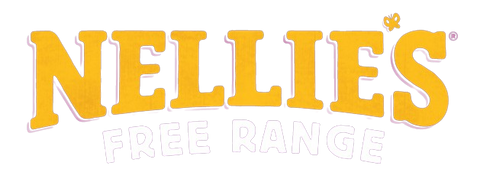
Why the Egg Is An Essential Food for Growth and Development in Children
Let's be honest, feeding growing kids and teens can feel like a never-ending quest. One minute they're craving dinosaur nuggets, the next they're declaring pizza the only food group. Finding nutritious options they'll actually eat can be tricky, right? But what if there was a single ingredient that packed a powerful nutritional punch, supported growth and played nicely with a host of other healthy foods? Enter the incredible, edible egg!
From boosting brainpower to building strong bones, eggs are extremely nutrient rich foods, promoting your child's growth at every stage of development. Learn why eggs are such an indispensable part of a healthy diet.
How Eggs Support Physical Development: Building Strong Bodies
Kids are constantly on the move – running, jumping, playing, and growing at lightning speed. All that activity requires serious fuel, and eggs deliver! Eggs are one the most efficient high-protein foods, providing the building blocks for strong muscles, healthy bones, and thriving tissues. Every egg is packed with quality protein, the essential nutrient that helps repair and rebuild their bodies after a busy day of play.
But it's not just about protein. Eggs are also a valuable source of Vitamin D, the sunshine vitamin that plays a crucial role in the calcium absorption needed for bone development. Strong bones need calcium, and Vitamin D helps their bodies use it effectively. While sunshine is a great source of Vitamin D, eggs offer a reliable way to ensure they're getting enough, especially during those colder months when outdoor time is limited.
And let's not forget the essential minerals! Eggs provide iron, crucial for preventing anemia and keeping energy levels up, so they can power through their day. They also contain zinc and iodine, both vital for healthy growth and development during those crucial childhood and teenage years. So, whether they're climbing monkey bars or acing their exams, eggs provide the nutritional support they need to thrive.
How Eggs Support Cognitive Development: Smart Snacks for Bright Minds
In today's fast-paced world, kids need all the brainpower they can get. From classroom learning to navigating social situations, their minds are constantly working. Eggs can help give them a mental edge, thanks to a few key nutrients.
Choline, often called the "brain food" nutrient, plays a vital role in brain development, memory, and cognitive function. And guess what? Eggs are an excellent source of choline! Giving your kids eggs can help support their learning and memory skills, setting them up for success.
We live in a digital age, and protecting young eyes is more important than ever. Lutein and zeaxanthin, two powerful antioxidants found in eggs, are like superheroes for eye health. They help protect against damage from blue light and support healthy vision, so kids can focus on what matters most.
And just like their bodies need energy, so do their brains. B vitamins, also found in eggs, are essential for energy production, concentration, and overall cognitive performance. So, whether they're tackling a tough homework assignment or learning a new skill, eggs can help keep their minds sharp and focused.
How to Meal Plan Eggs into All the Essential Nutrients for Childhood Growth and Development
-
Protein:
- Role: Builds and repairs tissues, supports muscle tissue growth, and maintains healthy bone tissue.
- Sources: Eggs (by itself a complete protein containing all 9 essential amino acids!), lean meats, dairy products, legumes, and nuts.
- Add an Egg: Create a protein-packed breakfast by adding a poached egg on top of avocado toast with a sprinkle of nuts for crunch.
-
Calcium:
- Role: Essential for bone density and strong teeth, supports nerve function and muscle contraction.
- Sources: Low fat dairy products, fortified plant-based milks, leafy greens, and almonds.
- Add an Egg: Whip up a spinach and cheese omelet, and serve it with a side of almond milk smoothie for a calcium boost.
-
Vitamin D:
- Role: Enhances calcium absorption, needed to improve bone health and immune function.
- Sources: Eggs, fatty fish, fortified foods, and sunlight exposure.
- Add an Egg: Make a delicious salmon and egg breakfast wrap with a whole-grain tortilla for a double dose of Vitamin D.
-
Iron:
- Role: Vital for making hemoglobin, which carries oxygen in the blood, and supports energy levels.
- Sources: Red meat, poultry, beans, lentils, and fortified cereals.
- Add an Egg: Prepare a hearty lentil and egg salad with a tangy vinaigrette for a satisfying iron-rich meal.
-
Zinc:
- Role: Supports immune function, wound healing, and DNA synthesis.
- Sources: Meat, shellfish, legumes, seeds, and nuts.
- Add an Egg: Toss together a quinoa and egg bowl with roasted seeds and a sprinkle of feta cheese for a zinc boost.
-
Iodine:
- Role: Essential for thyroid function and cognitive development.
- Sources: Iodized salt, seafood, dairy products, and eggs.
- Add an Egg: Enjoy a seafood and egg stir-fry with a dash of iodized salt for a flavorful iodine-rich dish.
-
Choline:
- Role: Important for brain development, memory, and cognitive function.
- Sources: Eggs, liver, fish, nuts, and cruciferous vegetables.
- Add an Egg: Create a brain-boosting salad with chopped boiled eggs, walnuts, and broccoli florets.
-
Omega-3 Essential Fatty Acids:
- Role: Supports brain health, vision, and reduces inflammation.
- Sources: Fatty fish (like salmon and sardines), flaxseeds, chia seeds, and walnuts.
- Add an Egg: Make a salmon and egg frittata with a sprinkle of chia seeds for a meal rich in omega-3 healthy fats.
-
B Vitamins (B6, B12, Folate):
- Role: Aid in energy production, brain function, and the formation of red blood cells.
- Sources: Eggs, meat, dairy, leafy greens, and whole grains.
- Add an Egg: Prepare a whole-grain wrap with scrambled eggs, turkey slices, and leafy greens for a B vitamin boost.
-
Vitamin A:
- Role: Essential for vision, immune function, and skin health.
- Sources: Carrots, sweet potatoes, spinach, and dairy products.
- Add an Egg: Bake a sweet potato and egg hash with a sprinkle of cheese for a vitamin A-rich breakfast.
-
Vitamin C:
- Role: Supports immune function, collagen production, and enhances iron absorption.
- Sources: Citrus fruits, strawberries, bell peppers, and broccoli.
- Add an Egg: Serve a colorful bell pepper and egg stir-fry with a side of fresh orange slices.
-
Magnesium:
- Role: Involved in over 300 biochemical reactions in the body, including energy production and muscle function.
- Sources: Nuts, seeds, whole grains, and leafy green vegetables.
- Add an Egg: Enjoy a magnesium-rich breakfast bowl with whole-grain oats, sliced almonds, and a poached egg on top.
By incorporating these creative egg-based dishes into your meals, you can ensure your child gets a balanced diet rich in essential nutrients, while at the same time learning that it's fun to eat healthy foods!
Maximizing Nutrient Absorption
Maximizing the absorption of nutrients is key to ensuring that your child's body gets the most benefit from the foods they eat. Here are some tips:
-
Pair Nutrients Wisely:
- Vitamin C and Iron: Consuming vitamin C-rich foods (like citrus fruits or bell peppers) with iron-rich foods (such as spinach or lentils) can enhance iron absorption.
- Fat-Soluble Vitamins (A, D, E, K): These vitamins are best absorbed with dietary fats. Add healthy fats like olive oil, avocado, or nuts to meals containing these vitamins.
-
Cook Smart:
- Cooking Methods: Lightly steaming or sautéing vegetables can help retain their nutrients better than boiling. Cooking can also make some nutrients more bioavailable, such as lycopene in tomatoes.
- Eggs: Cooking eggs can help make their protein more digestible and increase the bioavailability of certain nutrients like biotin.
-
Soak and Ferment:
- Legumes and Grains: Soaking or sprouting beans, lentils, and grains can reduce antinutrients like phytic acid, which can inhibit mineral absorption.
- Fermented Foods: Fermentation can enhance the bioavailability of nutrients and improve gut health, aiding overall nutrient absorption.
-
Mind Your Gut Health:
- Probiotics and Prebiotics: Consuming foods rich in probiotics (like yogurt and kefir) and prebiotics (like garlic and onions) can support a healthy gut microbiome, which is crucial for nutrient absorption.
-
Avoid Inhibitors:
- Caffeine and Calcium: Consuming caffeine close to meals can inhibit calcium absorption, so try to have your coffee or tea between meals.
- Oxalates and Calcium: Foods high in oxalates (like spinach) can inhibit calcium absorption, so balance them with low-oxalate foods.
-
Stay Hydrated:
- Adequate hydration is essential for digestion and nutrient transport throughout the body.
-
Balance Your Diet:
- A varied diet ensures you get a wide range of nutrients that can work synergistically to enhance absorption.
By incorporating these strategies into daily routines, you can help ensure that your child's body absorbs the maximum amount of nutrients from the foods they eat, supporting overall health and well-being.
Give Your Family the Nellie's Advantage
So, there you have it! From building strong bodies to boosting brainpower, eggs are a vital part of a nutritious diet for growing kids and teens. And with so many delicious ways to enjoy them, it's easy to make Nellie's Free Range Eggs a regular part of your family's meals and snacks.
By choosing Nellie's Free Range, you're not only nourishing your family with high-quality eggs, but you're also supporting our commitment to happy hens, sustainable farming, and a better food system.










